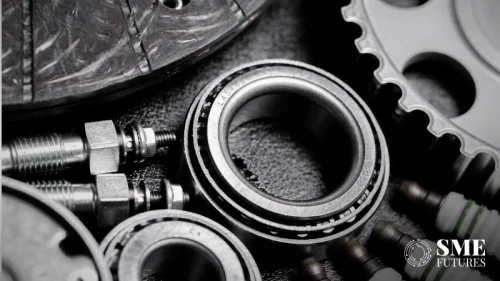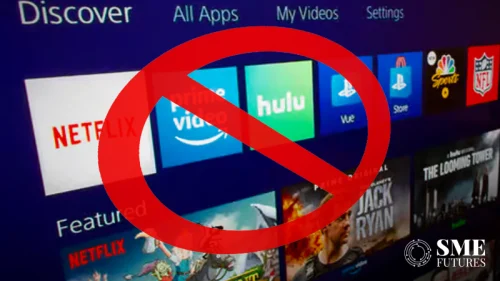The post-festive period doesn’t have to mean a dip in growth for SMEs. In this guide, we explore effective strategies, from customer retention and inventory management to digital marketing, that help sustain business momentum well into the year. By treating this time as an opportunity for innovation, SMEs can thrive and achieve year-round success.
In India, the festive season is a high-stakes period for many Small and Medium Enterprises (SMEs), particularly in sectors like retail, manufacturing, and consumer goods. Confederation of All India Traders (CAIT) reported the Indian festive season, particularly Diwali, generates around ₹3 lakh crore in business for MSMEs and SMEs.
This surge, while beneficial, is often followed by a significant drop in demand, leading to a post-festive dip.
For many SMEs, this slowdown can disrupt cash flow, production cycles, and overall business momentum. During the festive season, businesses experience a sharp increase in demand, which can lead to rapid expansions in inventory, staff, and production. SMEs, in particular, must avoid the common pitfall of overproduction without considering the post-festive decline in sales.
KredX’s study indicates that 60-70 per cent of MSMEs struggle with working capital post-festive, primarily due to poor inventory and financial management during peak seasons. This makes it crucial for businesses to not only plan for the festive rush but also develop a strategy for the period that follows. The post-festive period is an ideal time for SMEs to reflect on their performance. It’s important to ask the right questions: What worked well during the festive period? What could have been done better?
One of the key challenges for SMEs post-festive season is maintaining healthy cash flow. Many businesses are left waiting for payments from customers, which can take 45-60 days to clear, leading to a liquidity crunch. SMEs should evaluate their working capital needs, set new financial targets, and plan for any potential downturns. By revisiting their financial strategy and setting realistic goals for the upcoming quarters, businesses can mitigate these risks.
To manage this effectively, SMEs should explore short-term financing options like supply chain financing or government schemes such as the Emergency Credit Line Guarantee Scheme (ECLGS). By leveraging these financial tools, businesses can ensure liquidity even when sales slow-down. For instance, SMEs can opt for regular financial audits to forecast their financial needs well in advance, creating a buffer of working capital during the festive season. This financial cushion can prevent disruptions in operations and allow businesses to seize new opportunities as they arise.
While the festive season attracts a wave of new customers, businesses must focus on converting these one-time buyers into repeat clients. Indian Retail Report (2023) study shows, companies that invest in loyalty programs see a 25 per cent increase in customer retention over time. SMEs can implement loyalty rewards, personalised post-festive offers, and exclusive promotions to keep customers engaged beyond the festive period.
A proactive approach, such as thanking customers for their festive purchases and offering special post-festive deals, can boost customer loyalty and ensure repeat business. For instance, a clothing retailer could offer exclusive discounts on their new collections to customers who made purchases during Diwali. By maintaining contact through email marketing, online, WhatsApp, and SMS updates, businesses can foster a stronger relationship with their customers, ensuring they return even after the festive buzz fades. After the festive rush, SMEs should not lose momentum. Reaching out to existing clients, vendors, and customers is crucial to maintaining sales.
Post-festive, many SMEs are left with overstocked inventories due to the aggressive production cycles during the festive rush. Asking the right questions is essential to gain a clearer picture. Consider asking: Did certain products perform better than others? Were there operational bottlenecks? Did your marketing strategies hit the mark?
Businesses must adopt technology-driven solutions like Inventory Management Systems (IMS) that allow real-time tracking and analysis of stock levels. This not only prevents overproduction but also ensures businesses can pivot quickly based on current demand. A practical example of this can be seen in the electronics sector, where a Stratefix client restructured their inventory management process post-Diwali. By integrating an IMS, they reduced excess stock by 30 per cent and improved operational efficiency, resulting in better cash flow management and fewer losses on unsold goods.
The rise of e-commerce and digital platforms offers SMEs an opportunity to maintain customer engagement well after the festive season ends. By continuing to invest in targeted digital marketing campaigns, businesses can remain top-of-mind for their customers.
Social media platforms and choosing the right marketing and promotional tools with SEO optimisation are key tools for keeping your brand visible. For instance, an SME in the cosmetics industry utilised post-Diwali campaigns on Instagram and Facebook, engaging with customers through contests, tutorials, and live promotions. This not only generated repeat business but also attracted new customers alongside referrals, helping the brand maintain sales momentum long after the festive period ended.
Many SMEs hire temporary workers to handle the festive rush. However, after the season ends, businesses should consider retaining top-performing temporary staff and investing in their training for permanent roles. This ensures the business is prepared for the next surge in demand while reducing hiring and onboarding costs.
From my own experience, I have seen several success stories where SMEs implemented structured training programs for their seasonal workforce. This not only improved retention rates but also enhanced overall productivity. For example, a retail SME that trained its seasonal staff for permanent roles saw a 20 per cent improvement in customer service satisfaction, leading to higher conversion rates post-festive season.
The post-festive slowdown provides SMEs with the perfect opportunity to explore new markets or product lines. By analysing customer behaviour during the festive season, businesses can identify emerging trends and diversify their offerings accordingly. For instance, a traditional handicraft business that initially catered to local markets expanded to e-commerce platforms like Amazon, Flipkart, Etsy, and Craftsvilla after Diwali, targeting urban consumers interested in eco-friendly products. This planned move resulted in a 35 per cent increase in sales during the slower months.
The festive season may be over, but it should not mark the end of your business momentum. I highly recommend SMEs focus on revisiting their vision, analysing performance, setting new targets, and updating their strategies. This requires both strategic planning and operational adjustments, with an emphasis on customer engagement, financial management, and internal optimisation. By maintaining an action-oriented mindset, SMEs can turn the post-festive dip into a period of growth and preparation for the year ahead.
SMEs cannot afford to rely solely on the festive period for their yearly success. By focusing on customer retention, optimising inventory management, maintaining cash flow, and investing in both digital marketing and workforce training, SMEs can create a robust foundation for sustained growth. The key is to treat the post-festive dip as an opportunity for innovation, rather than a setback.











